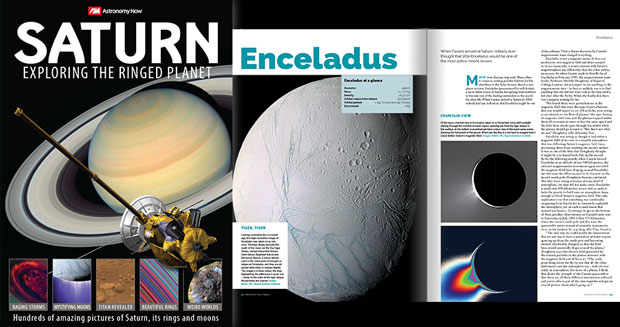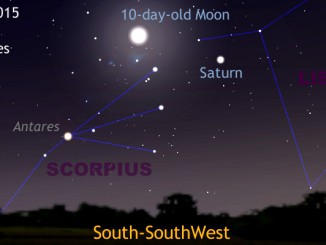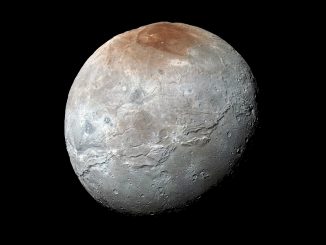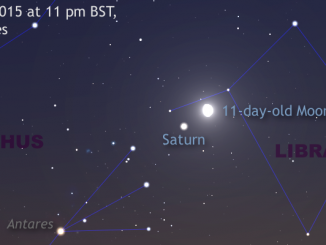
In this image from NASA’s Cassini spacecraft, Saturn’s moon Dione reveals its past via contrasts. The features visible here are a mixture of tectonics — the bright, linear features — and impact cratering — the round features, which are spread across the entire surface.
Tectonic features tell the story of how Dione (1,123 kilometres across) has been heated and cooled since its formation, and scientists use those clues to piece together the moon’s past. Impact craters are evidence of external debris striking the surface, and thus they tell about the environment in which the moon has existed over its history.
This view looks toward the trailing hemisphere of Dione. North on Dione is up. The image was taken in visible light with the Cassini narrow-angle camera on 11 April 2015.
The view was obtained at a distance of approximately 110,000 kilometers from Dione and at a Sun-Dione-spacecraft, or phase, angle of 28 degrees. Image scale is 660 metres per pixel.
Saturn: Exploring the Ringed Planet
Find out more about Saturn and its moons in this 196-page special edition from Astronomy Now. [geot exclude_region=”US” ]Order from our online store.[/geot][geot region=”US” ]Order from our online store.[/geot]




